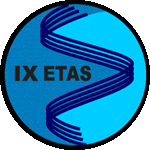
P.J. Santos, pjsantos@ualg.pt
O. C. Rodrígues, orodrig@ualg.pt
P. Felisberto, pfelis@ualg.pt
S. M. Jesus, sjesus@ualg.pt
Institute for Systems and Robotics, University of
Algarve
Campus de Gambelas, PT-8005-139 Faro, Portugal
Ref.: IX ETAS - IX Encontro de Tecnologia Acustica Submarina,
Arraial do Cabo, Rio de Janeiro, Brasil, November 2010.
Abstract:The objective of this paper is to present an overview of the work
developed at SiPLAB, University of Algarve, with vector sensor data collected during Makai experiment 2005,
in geometric and geoacoustic parameter estimation. During this experiment devoted to high frequency initiative,
acoustic data were acquired by a four element vertical vector sensor array (VSA).
A vector sensor is a directional sensor constituted by one omni directional pressure sensor and
three velocity-meters, where both the acoustic pressure and the three particle velocity components are measured.
The spatial filtering capabilities of the vector sensors are used to estimate the direction of arrival (DOA)
of low and high frequency acoustic sources considering a single and a multiple sensor VSA.
An inversion method based on Bartlett estimator is used for three dimensional localization of ship's noise
where the noise source is estimated in range and depth taking into accounts the azimuth given by DOA.
Moreover, this method is applied to seabed parameters estimation like sediment
compressional speed, density and compressional attenuation, contributing to improve
the resolution of these parameters.